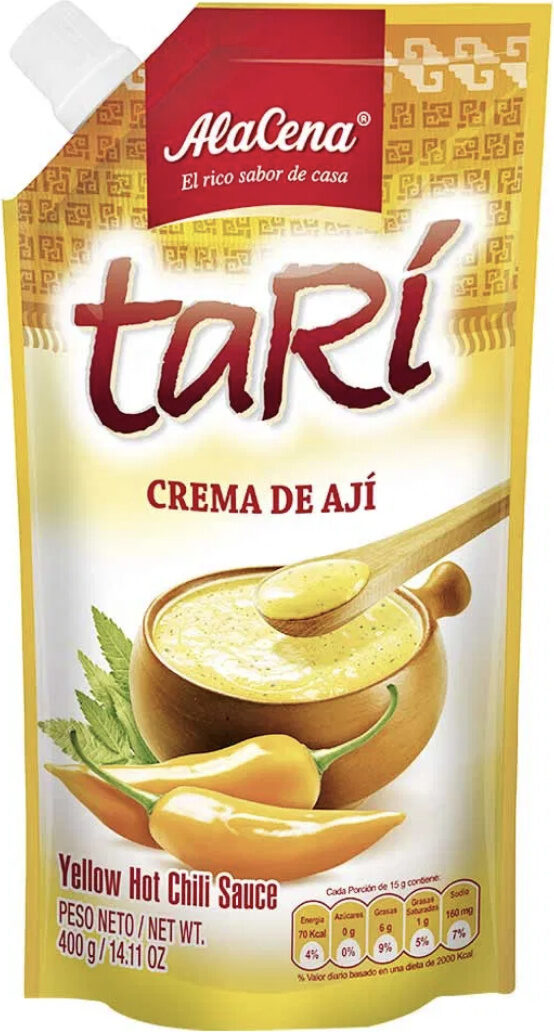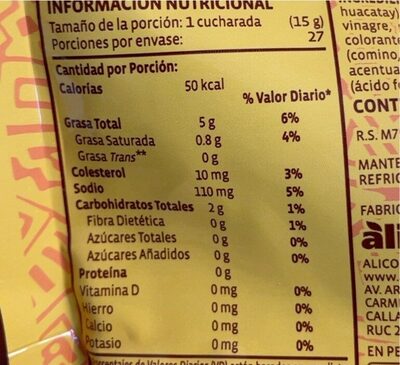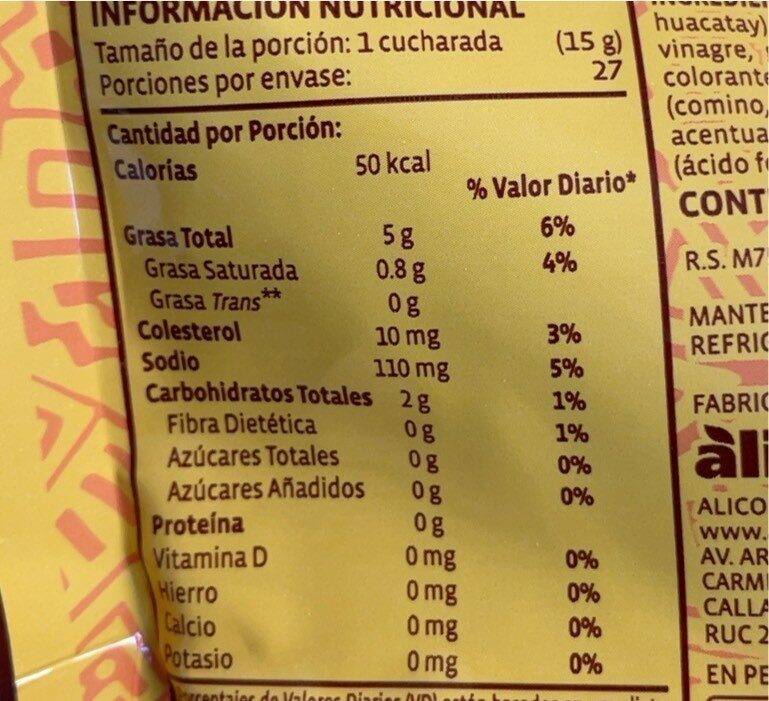Crema de aji - Alacena - 400 g
This product page is not complete. You can help to complete it by editing it and adding more data from the photos we have, or by taking more photos using the app for Android or iPhone/iPad. Thank you!
×
Código de barras: 7750243030335 (EAN / EAN-13)
Cantidade: 400 g
Marcas: Alacena
Categorías: en:Condiments, en:Sauces, en:Groceries
Country: España
Matching with your preferences
Medio ambiente
Empaquetado
Transportation
Report a problem
Data sources
Product added on by usda-ndb-import
Last edit of product page on by tmbe7.
Páxina do produto tamén editada por acuario, autorotate-bot, elcoco, kiliweb, musarana, naruyoko, openfoodfacts-contributors, thaialagata, yuka.sY2b0xO6T85zoF3NwEKvllNVVNOPjSPHEDLfn0Sv_filE7_kRelA3IGiMag, yuka.sY2b0xO6T85zoF3NwEKvllVFeN3D-A_HFSHfwBe65vuzNaHJPOxYxq3XA6s.
Se os datos son incompletos ou incorrectos, pódeos completar ou corrixir editando esta páxina.











